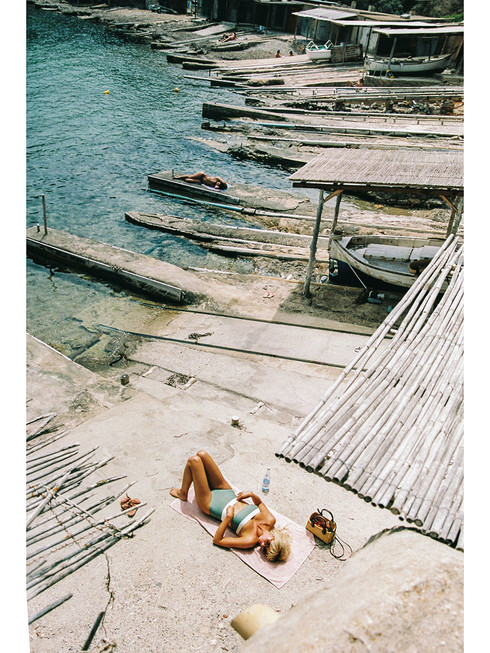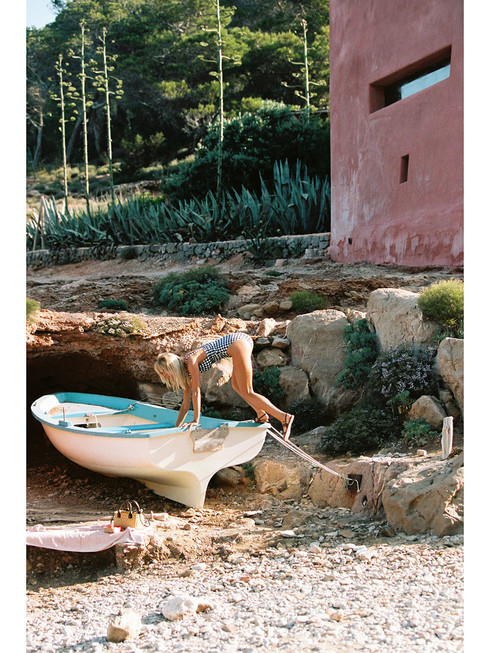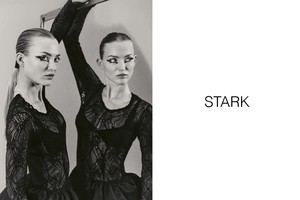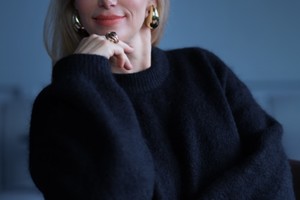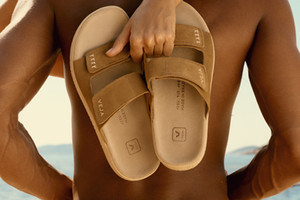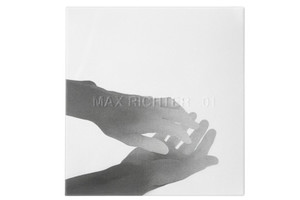Scampi: When Summer is not Cancelled
Written by Ksenia RundinIn the summer of 1946, both fashion designer Jacques Heim and mechanical engineer Louis Réard claimed to be the first to launch the bikini on the French Riviera in Cannes. The design consisted of two triangles on top, placed to cover the bosom and two triangles, one front, one back, on the bottom. Although Louis Réard patented his version, it is Jacques Heim, who is remembered as a couturier and an early advocate of sportswear. And we are still not certain who really invented bikini. Nevertheless, the first time the bikini officially appeared in a fashion event was at a poolside show at the Piscine Molitor in Paris on July 5, 1946. Since then it has never left the social space. How does the swimwear market look like today? Odalisque has met Emelie Olsson, a women behind the Swedish swimwear brand Scampi in order to speak about the brand, the company, the design process and the sustainable idea behind it.
Could you tell us about yourself and how the idea to start Scampi appeared?
I had been in the fashion industry for 12 years and as the daughter of two entrepreneurs I was longing to do my own thing. I had had my eyes on Scampi for a while, the brand has been around for x years and they had a lot of good values that I could build my vision on. I knew I wanted to be as sustainable as possible and Scampi was already at that time producing in Europe with European fabrics, so it was a good start from that aspect. The brand also represented long lasting quality and inclusiveness to all shapes and sizes, two things I had also envisioned. When I randomly met the owners at the beach in Tulum and they were in the process of selling, it really felt like it was meant to be.
What is Scampi about and how is it different from other swimwear brands in the market?
Scampi first and foremost represents a sustainable vision and the desire to have zero impact on the planet. Long lasting quality, timeless style and outstanding fit goes hand in hand with that, we want to do pieces that stay in your wardrobe for years and not months or weeks. Scampi is also inclusive and offer great swimwear to every woman out there, regardless of size or body type. Those things are really what makes up the brand and what we want to do.
What does it mean to be a climate positive brand in such a niche market?
It is really a tricky thing to communicate. On one hand it is better not to produce any products and have zero impact on the climate from that aspect. But other brands are still making swimwear and they are doing it with a bigger environmental impact than us so we are a better alternative since people will still want to go swimming. Climate positivity for us means that we are compensating or offsetting all the emissions (externally assessed) created throughout our supply chain, from the making of sewing thread to our employee’s holiday travels, by 120%. That initiative not only offsets all our emissions and more but also help develop green power in developing countries faster, making that the cheaper and more used power source vs coal or gas. So, in a sense the world is instantly 20% better off and most likely with an added long-lasting positive effect. The over arcing need for less consumption makes this a really tight rope to walk but I firmly believe that for this time, now, this is the best we can do with what we have at our disposal.
What are the Econyl fabrics that you use in your production?
Swimwear today is mainly made from either virgin (newly produced) polyamide or polyester. Two strong materials that suits the purpose well as both absorb little water and dry quickly. The backside is the negative environmental impact; both materials require large amounts of energy and chemicals in the production process and they also release micro-plastics in our waters during laundry that among other things can harm the reproductive capability of fish (and thus ending up in our bodies when we eat that sea bass). Econyl is made through collecting polyamide (Nylon) in the form of old fishing nets and other waste from the oceans. Through a sustainable purification and regeneration process, new polyamide is created from this waste. This polyamide is called Econyl and can be recycled over and over again without effects on quality and without the need for extracting new resources from our planet.
Do you use any other fabrics?
Our main business is the swimwear by far and for all of that we are using Econyl. We also produce some beautiful beachwear in matching prints and for that we use plant based fibers in the form of viscose that we chose for it’s soft touch, nice drape and relatively low environmental impact.
Could you describe the design process?
It is ongoing all the time, nature inspires me every day, my activities inspire me, surfing, swimming with the kids being active on the beach watching people being happy in their best environment is inspiring. I always work on a few items that I fell myself are missing in the market, when they are perfect I make them apart of the next up coming collection. It takes months to create the perfect fit and functionality. With colors and prints its faster, I get inspired by the trends out there obviously and also search for new unique prints or vintage ones that I can update.
How many collections do you release per year?
We currently have 3-4 drops per year but are looking into having more and smaller capsules released in the future in order to be more flexible and able to respond to customers’ needs in a more agile way. The aim is to reduce over-production and not build stock that is both bad for the environment and business.
Who is your customer?
Women between 25-65. That is the fantastic thing, scampi offers swimwear for all ages and body types. People buy scampi because they have high standards when it comes to fit and quality. Fit is everything and the quality we use lasts up to five times longer than our competitors.
Is it hard to be sustainable and gain profit? Do you have to compromise and, if so, how?
It is definitely a challenge, we put everything we earn back into the brand and our efforts to be as good as we can for the world while still producing products. It’s a fine balance between being a commercial company and an advocate for green change, the best would be if we all went swimming naked. But I believe that we can be the better alternative and we are continuously working on bettering our practices. We do not really compromise when it comes to our product or our process though and that’s probably why we are barely breaking even.
Do you do any collaborations with other brands or artists?
No not at the moment but I am looking to make a collaboration with an artist who makes wonderful prints in the future.
What would your advice be for young designers or entrepreneurs, who want to start their own brand, when it comes to sustainable strategy? Where to start and how?
If you have an idea that makes you a better alternative in your area than what is out there, I think that is a good place to start. You still need to be as good or better than everyone else to cut through the noise, but established brands are slower and mostly needs to support a huge staff often including store personnel with their actions. Make sure your product ticks all the boxes, is possible to produce close to your market at a competitive price and go digital. Focus your efforts on-line where you can get better margins but be aware this requires a fantastic marketing effort so assure you have that competence on-board. So, be the better alternative, beat them at their own game and give back what you can to the planet. And keep evolving.

